Read "DTC Status" parameter.
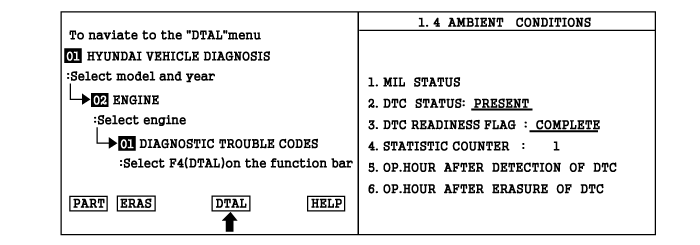
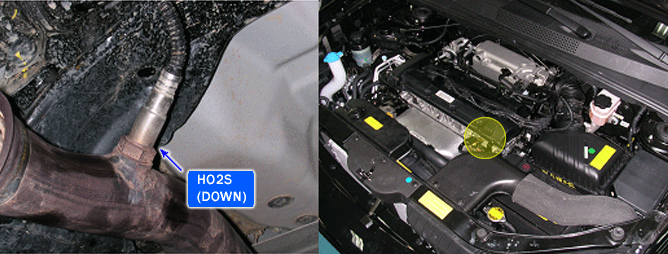
The rear heated oxygen sensor is mounted on the rear side of the Catalytic Converter (warm-up catalytic converter) or in the rear exhaust pipe, which is able to detect catalyst efficiency. The rear heated oxygen sensor (HO2S) produces a voltage between 0V and 1V. This rear heated oxygen sensor is used to estimate the oxygen storage capability. If a catalyst has good conversion properties, the oxygen fluctuations are smoothed by the oxygen storage capacity of the catalyst. If the conversion provided by the catalyst is low due to aging, poisoning or misfiring, then the oxygen fluctuations are similar to signals from the front oxygen sensor.
PCM sets DTC P0138 if the PCM detects signal voltage higher than the possible range of a properly operating rear heated oxygen sensor (HO2S).
ITEM | DETECTING CONDITION | POSSIBLE CAUSE |
DTC Strategy | ●Check short circuit to battery on rear HO2S | ● Short to Battery in signal harness ● Contact resistance in connectors ● Faulty Heated O2 Sensor(HO2S) |
Enable Condition | ● 10 < Battery voltage < 16V | |
Threshold Value | ● Sensor voltage >1.3V | |
Diagnostic Time | ● 1 sec. |
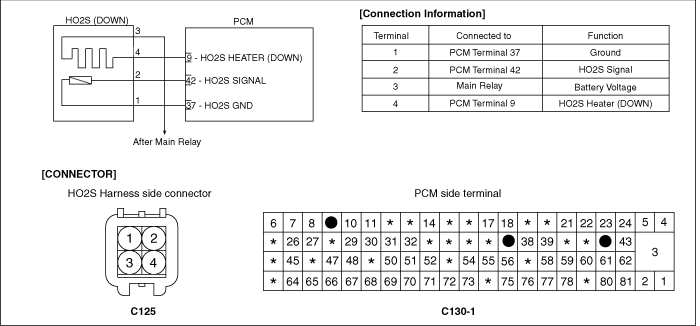
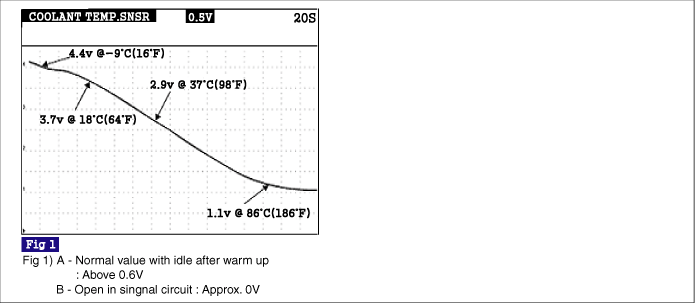
Connect scan tool and select "Diagnostic Trouble Codes(DTCs)" mode.
Press F4(DTAL) to select DTC information from the DTCs menu.
Confirm that "DTC Readiness Flag" indicates "Complete". If not, drive the vehicle within conditions noted in the freeze frame data or enable conditions.
Read "DTC Status" parameter.

Is parameter displayed "History(Not Present) fault"?
History (Not Present) fault : DTC occurred but has been cleared.
Present fault : DTC is occurring at present time.

▶ Fault is intermittent caused by poor contact in the sensor's and/or ECM's connector or was repaired and ECM memory was not cleared. Thoroughly check connectors for loose or poor connection, bending, corrosion, contamination, deterioration, or damage. Repair or replace as necessary and go to "Verification of Vehicle Repair" procedure.

▶ Go to next step as below.
Many malfunctions in the electrical system are caused by poor harness(es) and terminals. Faults can also be caused by interference from other electrical systems, and mechanical or chemical damage.
Thoroughly check connectors for looseness, poor connection, bending, corrosion, contamination, deterioration, or damage.
Has a problem been found?

▶ Repair as necessary and go to "Verification of Vehicle Repair" procedure.

▶ Go to "Signal Circuit Inspection" procedure.
Ignition "OFF"
Disconnect HO2S connector.
Ignition "ON"
Measure resistance between terminal 2 of the sensor harness connector and chassis ground.
Specification : Approx. 0V
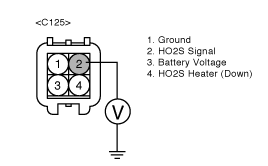
Is voltage within the specification?

▶ Go to "Component Inspection" procedure.

▶ Repair open in the ground circuit and go to "Verification of Vehicle Repair".
Warm up the engine to normal operating temperature and check that HO2S signal is active.
Connect Scantool and monitor the "O2 SNSR VOLT.(B1/S2)" parameter on the Scantool data list.
Test Condition : Ignition "ON" & Engine "ON" & In Idle("Closed Loop")condition
Specification : Above 0.6V

Is sensor data near the specified value?

▶ Check for poor connection between PCM and component: backed out terminal, improper mating, broken locks or poor terminal to wire connection. Repair as necessary and go to "Verification of Vehicle Repair" procedure.

▶ Check HO2S for contamination, deterioration, or damage. Substitute with a known-good HO2S and check for proper operation. If the problem is corrected, replace HO2S and then go to "Verification of Vehicle Repair" procedure.
After a repair, it is essential to verify that the fault has been corrected.
Connect scan tool and select "Diagnostic Trouble Codes(DTCs)" mode.
Press F4(DTAL) and confirm that "DTC Readiness Flag" indicates "Complete". If not, drive the vehicle within conditions noted in the freeze frame data or enable conditions.
Read "DTC Status" parameter.
Is parameter displayed "History(Not Present) fault"?

▶ System performing to specification at this time. Clear the DTC

▶ Go to the applicable troubleshooting procedure.